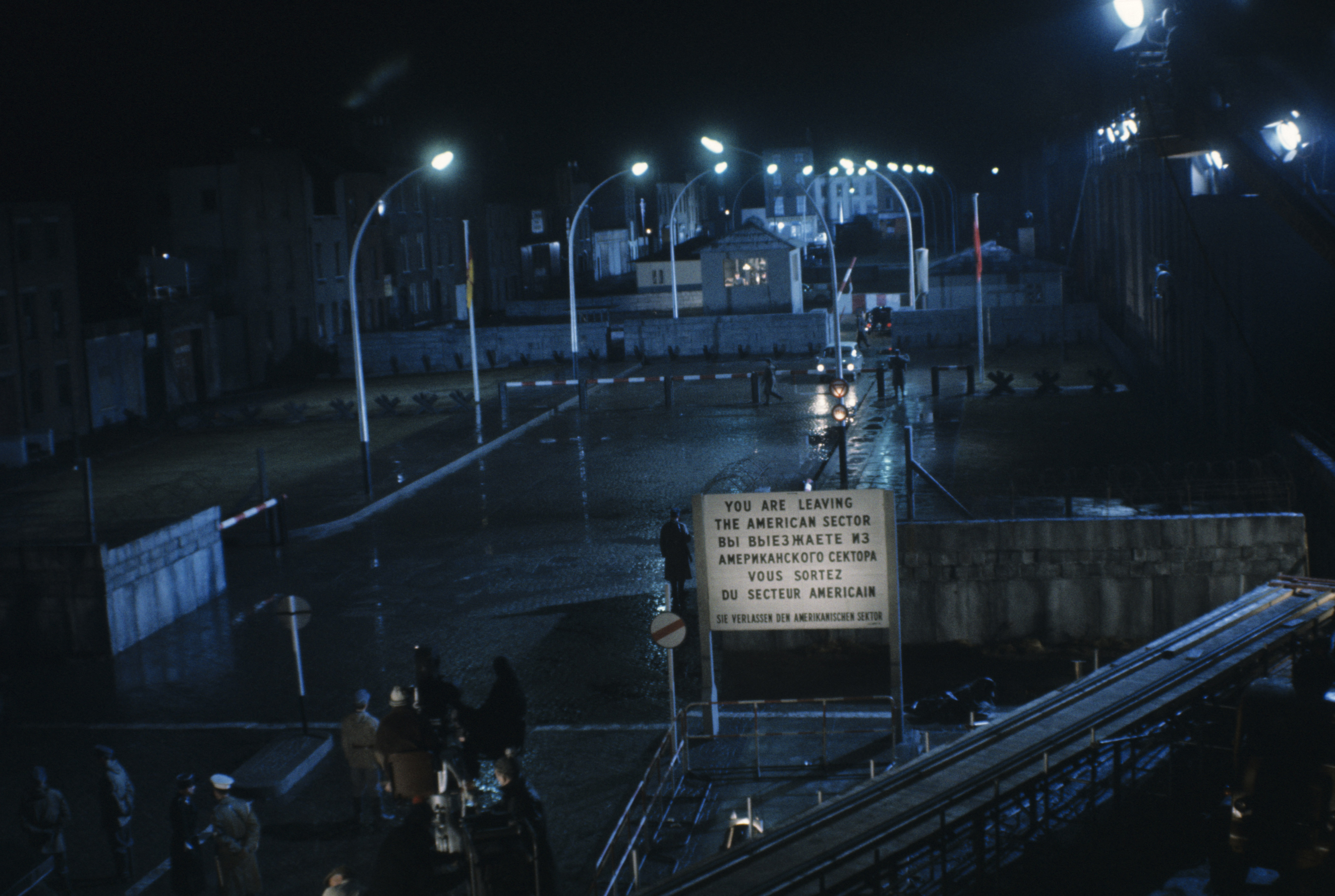After filming was complete, these fragments of a pseudo-Berlin Wall were purchased by a local businessman, who erected them in front of his galvanizing plant in Dublin’s Inchicore neighborhood. Thus Berlin’s Cold War landscape continued to circulate both visually and physically throughout 1960s Ireland. Donal Fallon, “The Berlin Wall (In Inchicore),” Come Here to Me! (blog), February 28, 2013. See ➝.
In addition to those mentioned in this article, my favorite Berlin Wall films include: And Your Love Too (Frank Vogel, 1962), Funeral in Berlin (Guy Hamilton, 1966), Cycling the Frame (Cynthia Beatt, 1988), The Legend of Rita (Volker Schlöndorff, 2000), Gaz Bar Blues (Louis Bélanger, 2003), Herr Lehmann (Leander Haußmann, 2003), The Invisible Frame (Cynthia Beatt, 2009), and Rabbit à la Berlin (Bartek Konopka, 2009).
Aldo Rossi, The Architecture of the City, trans. Diane Ghirardo and Joan Ockman (Cambridge: MIT Press, 1982), 166.
Brian Ladd, The Ghosts of Berlin: Confronting German History in the Urban Landscape (Chicago: University of Chicago Press, 2018), 7.
Henning Wrage, “Politics, Culture, and Media before and after the Berlin Wall,” in The German Wall: Fallout in Europe, ed. M. Silberman (New York: Palgrave Macmillan, 2011), 59. For Wrage, the quintessential example of a film making the case for the wall before its construction is Günter Reisch and Hans-Joachim Kasprzik’s five-part television miniseries Gewissen in Aufruhr {Conscience in Commotion} (1961). See Wrage, “Politics,” 65–68.
Potsdam itself is home to the “Bridge of Spies” between East and West Berlin featured in Steven Spielberg’s 2015 film of the same name.
Beyond the example discussed in the following paragraph, Wenders’ film transcends the boundaries of West Berlin in two other ways. First, the angels often watch over both East and West Berlin from raised perches atop the Europa Centre or the Siegessäule (Victory Column). Second, Wenders used footage of East Berlin’s Prenzlauer Berg neighborhood taken by DEFA cinematographer Thomas Plenert and smuggled across the border by the actor Hans Zischler. The ease with which the angels appear to pass through the wall in this scene is inversely related to the difficulty of acquiring these few seconds of footage. See Conrad Menzel, “Die ganze Stadt,” der Freitag, September 23, 2012. See ➝.
Rem Koolhaas, “Field Trip: (A)A Memoir: The Berlin Wall as Architecture,” in Small, Medium, Large, Extra-Large by Office for Metropolitan Architecture, Rem Koolhaas, and Bruce Mau (New York: Monacelli Press, 1995), 226.
Koolhaas, “Field Trip,” 225.
Koolhaas, “Field Trip,” 228.
Richard Luck, “Angels of old Berlin: An oral history of Wings of Desire,” The New European, October 27, 2022. See ➝.
Ladd, Ghosts of Berlin, 34.
Ladd, Ghosts of Berlin, 26–27.
Julia Nikschick-Röhlig and Marc Röhlig, “Writings on the Wall,” Huntingbond (blog), August 30, 2015. See ➝.
Emily Pugh, Architecture, Politics and Identity in Divided Berlin (Pittsburgh: University of Pittsburgh Press, 2014), 313.
The internal power struggles in late-1980s DEFA are recounted in Marco Bohr, “The Collapse of Ideologies in Peter Kahane’s The Architects” in Frontiers of Screen History: Imagining European Borders in Cinema, 1945–2010, ed. Raita Merivirta, Kimmo Ahonen, Heta Mulari, and Rami Mähkä (Bristol: Intellect, 2013), 65–90.
Kahane and his crew were filming on the night of November 9, 1989, when the Berlin Wall came down. See Sebatian Heiduschke, East German Cinema: DEFA and Film History (New York: Palgrave Macmillan, 2013), 125.
Peter Schneider, The German Comedy: Scenes of Life After the Wall, trans. Philip Boehm and Leigh Hafrey (New York: Farrar, Straus and Giroux, 1991), 13. Quoted in Ladd, Ghosts of Berlin, 30.
I am grateful to Nick Axel, Thomas Balaban, Eve Blau, Hugh Campbell, Joseph Clarke, Dominique Hamel, Brian Ladd, Hannah Paveck, Jessica Schouela, Robin Schuldenfrei, David Theodore, Jennifer Thorogood, and Maria Zinfert for their kind suggestions as I have studied the Berlin Wall’s many cinematic echoes.
